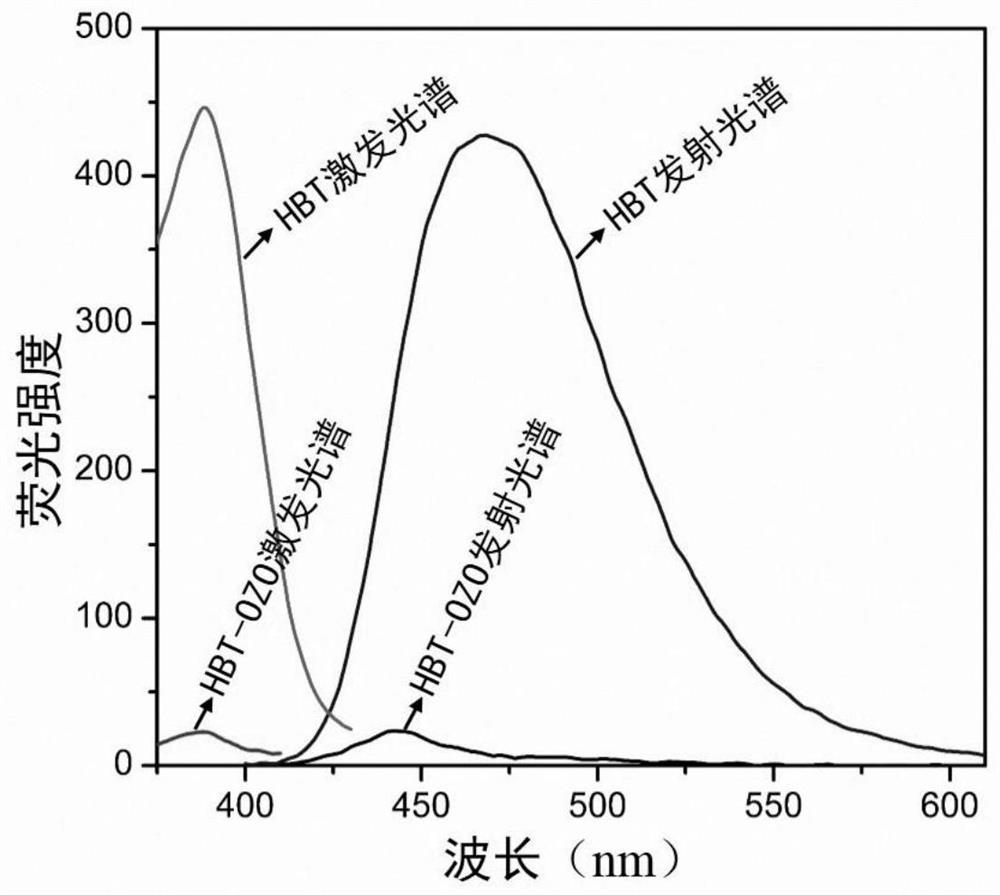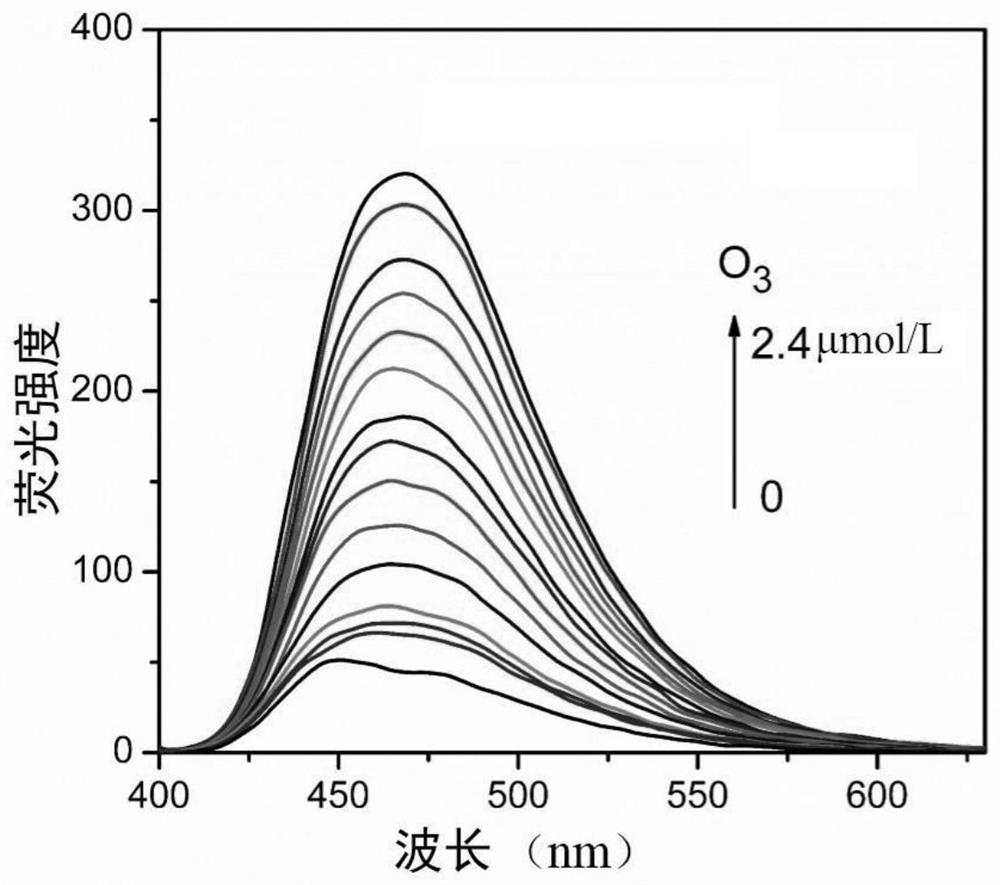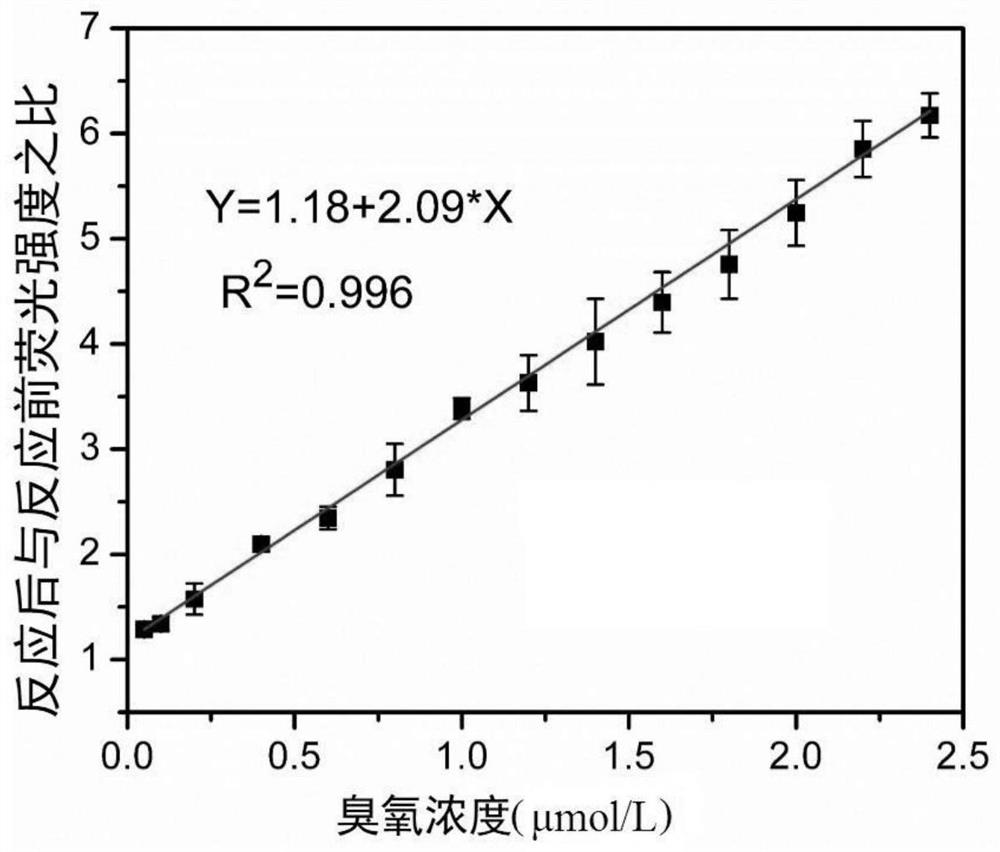A fluorescent probe for visually detecting ozone and its preparation method
A fluorescent probe, ozone technology, applied in chemical instruments and methods, fluorescence/phosphorescence, organic chemistry, etc., can solve problems such as inability to qualitatively detect ozone, and achieve the effect of saving costs, avoiding interference, and avoiding large-scale instruments
- Summary
- Abstract
- Description
- Claims
- Application Information
AI Technical Summary
Problems solved by technology
Method used
Image
Examples
Embodiment 1
[0035] (1) Synthesis of fluorescent probes
[0036] 0.5 mmol 2-(2-hydroxyphenyl)benzothiazole (HBT) was mixed with 0.75 mmol 4-bromo-1-butene and 3 mL dimethylformamide (DMF) and 1.25 mmol cesium carbonate, magnetically stirred for 12 h. Then add ice water to terminate the reaction, extract with dichloromethane and dry over anhydrous sodium sulfate respectively; then pass through the silica gel chromatography column purification of petroleum ether / dichloromethane eluent with a volume ratio of 10:1, and remove the solvent by rotary evaporation to obtain The fluorescent probe has a structural formula as shown in formula I:
[0037]
[0038] (2) Qualitative and quantitative detection of ozone
[0039]For gaseous ozone samples to be tested, use a puncher to make organic filter membranes into small discs of uniform specifications, soak the filter discs with fluorescent probes dissolved in acetonitrile solvent, take them out immediately, and dry them with qualitative filter pape...
PUM
 Login to View More
Login to View More Abstract
Description
Claims
Application Information
 Login to View More
Login to View More - R&D Engineer
- R&D Manager
- IP Professional
- Industry Leading Data Capabilities
- Powerful AI technology
- Patent DNA Extraction
Browse by: Latest US Patents, China's latest patents, Technical Efficacy Thesaurus, Application Domain, Technology Topic, Popular Technical Reports.
© 2024 PatSnap. All rights reserved.Legal|Privacy policy|Modern Slavery Act Transparency Statement|Sitemap|About US| Contact US: help@patsnap.com










